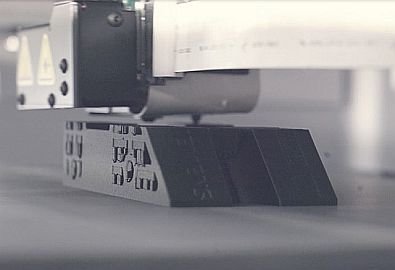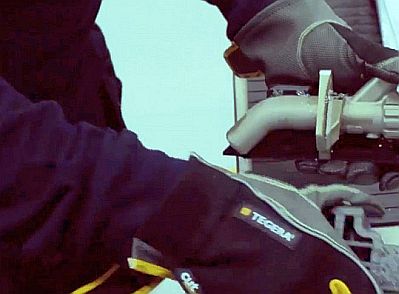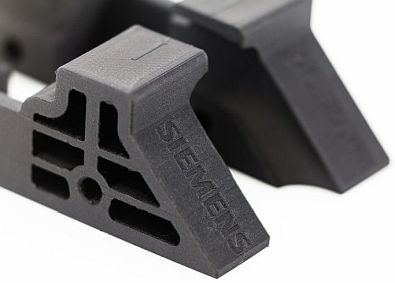Siemens Energy Turns to 3D Printing to Make Impossible Possible
To produce a customized fuel injector nozzle for its gas turbines, Siemens engineers turned to the additive manufacturing technology from Markforged.
Siemens Energy manufactures world-class gas turbines for industrial power generation and mechanical drive applications. Used for a variety of applications, including turn-key power station projects, Siemens power systems are frequently tailored for each customer project. One such area of customization is the fuel type used to power the gas turbine.

Siemens Gas & Power utilized its industrial X7 printer for strong, stiff fixtures.
Siemens is also a pioneer in the field of additive manufacturing and has been driving its industrialization for over a decade. In 2012, they opened their first designated 3D printing workshop for serial manufacturing, repairs, and prototyping of metal components. The workshop is located Finspång, Sweden, as an integral part of the gas turbine manufacturing business.
The Challenge
Recently the Siemens engineers in Finspång began 3D printing a specially designed fuel injector nozzle to react quickly to customers' customization requirements. They found that conventional methods of manufacturing were hindering the team from achieving higher customer benefits.
By additively manufacturing the fuel injector nozzles, the engineers were able to fabricate high-performing, complex parts faster than before. However, they also realized that the more intricate the 3D printed custom nozzles became, so too did the post-production machining.

The fixtures allow Siemens engineers to machine the fuel injector nozzles.
The necessary support structure required to 3D print the nozzle had to be milled away afterwards, and a special fixture had to be designed to do this. Conventional tooling could not reliably hold the nozzles without causing damage due to the thin, geometrically obscure nature of the nozzle walls. To outsource the geometrically complex, custom tooling would drive up lead time significantly.
The Solution
The Siemens team started to look to other options that could withstand use in industrial settings.
Markforged technology -- specifically the X7 -- was found to be the most promising. With the unique capability to reinforce each layer with continuous strands of fiber, the X7 enabled the team to produce a smooth, quality surface finish unlike other plastic-based 3D printers.
They utilized their industrial Markforged X7 printer to additively manufacture the fixtures that could hold the fuel nozzle in place for machining. "From concept to print, it saved us 10% of time compared to fabricating a conventional machined fixture," says Jonas Fagertoft, Additive Manufacturing Technician at Siemens in Finspång.

The holding devices are clamped on while the fuel nozzle is machined on a 5-axis mill.
"With Markforged technology, the design and the production of the holding devices was significantly faster and still strong," says Andreas Graichen, Group Manager at the Additive Manufacturing Centre of Competence at Siemens.
The fixture allowed the Siemens technicians to clamp the geometrically complex fuel nozzle for machining on their 5-axis mill. As the metal part's walls were quite thin, they were concerned that the fuel nozzle might flex under machining loads. However, since the Markforged printed fixture was printed in Onyx -- a nylon-based thermoplastic filled with chopped carbon fiber -- the fuel nozzle could be clamped without it vibrating within the conformal fixture. The composite workholding has transformed the fuel injector nozzle from a machining challenge to an asset.
The team is impressed with the quality and stiffness of the fixtures. "We become more flexible. We become faster. It [Markforged X7] is absolutely a lean tool," says Graichen of the X7. Fagertoft agrees, "The material itself is thoroughly impressive in terms of strength. You can basically make the impossible possible."
The Future
Engineers at Siemens Energy in Finspång can continue to quickly iterate on designs for different customer needs. There are already plans in place to use Markforged technology for other significant tooling projects. Siemens employees are now empowered to take on new and existing projects with this newly gained knowledge. "We're looking forward to working with Markforged in our upcoming projects," says Graichen.
Want more information? Click below.
Rate this article
View our terms of use and privacy policy ::m::